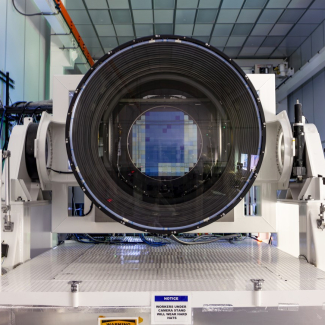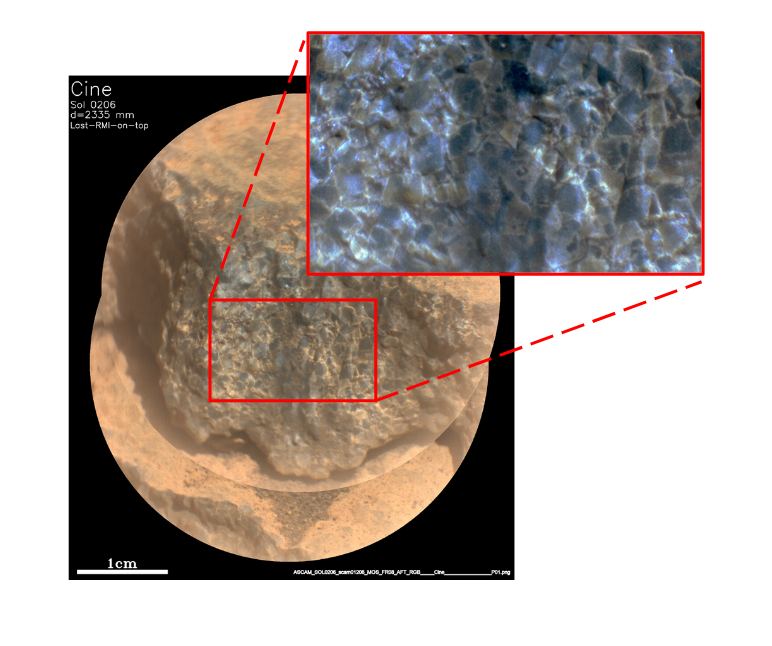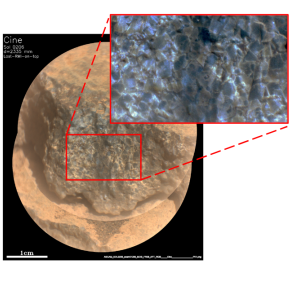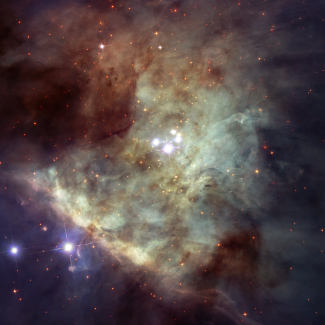
Planet Mars: Perseverance rover makes surprising geological discoveries in Jezero Crater
On February 21, 2021, NASA's Perseverance rover landed in the Jezero Crater on Mars. In October1 , the rover confirmed the importance of its landing site, showing that Jezero Crater really was the site of a lake 3.6 billion years ago. Perseverance's geological discoveries in the crater's floor are described in four papers published on August 25, 2022 in Science and Science Advances.
The first analyses were a surprise: in this ancient aquatic environment, the scientists had expected to find sedimentary rocks formed from accumulated sand and mud, but instead identified igneous rocks derived from deep or surface volcanic processes. Some of the rocks were formed by the accumulation of millimetre-scale grains of olivine, similar to those found in some Martian meteorites. The presence of these coarse-grained rocks on the surface of Mars is astonishing. On Earth, such rocks are formed by the slow cooling of magma at depth in magma chambers, and are then brought to the surface by erosion and plate tectonics. Above this unit, basaltic rocks were identified, probably deposited by later lava flows. In addition, secondary minerals were observed, providing evidence that all the rocks had been altered by water. This indicates that liquid water flowed there after their formation, either during the lacustrine episode that led to the formation of the delta, or during subsequent water flows.
To date, 12 rock samples have been collected for return to Earth2 in 2033. The four papers show that these first samples have a strong scientific potential for research in geology (magmatism, past magnetic field, geochronology, etc.), geochemistry (water and carbon cycles), and also astrobiology, as this type of altered rock is known to be a niche for life on Earth as well as having the ability to preserve evidence of past life in the form of biosignatures.
The French-US instrument Supercam3 made a major contribution to these discoveries by imaging the texture of rocks using its very high resolution camera, and by analysing their chemistry and mineralogy with its various spectrometers. SuperCam has performed over 1,400 analyses accurately documenting geology along the rover's traverse, and has achieved the unprecedented technological feat of capturing the first Raman and infrared spectra on the surface of Mars.

In France, these researches was conducted by scientists from the following French institutes:
- Institut de minéralogie, de physique des matériaux et de cosmochimie (CNRS/Sorbonne Université/Muséum National d'Histoire Naturelle)
- Institut de recherche en astrophysique et planétologie (Université de Toulouse 3 Paul Sabatier/CNRS/CNES)
- Laboratoire d’études spatiales et d’instrumentation en astrophysique (Observatoire de Paris-PSL/CNRS/Sorbonne Université/Université de Paris Cité)
- Laboratoire de planétologie et géosciences (CNRS/Nantes Université/Université Angers),
- Laboratoire de géologie de Lyon : Terre, planètes, environnement (Université de Lyon/Université Claude Bernard Lyon 1/Ecole Normale Supérieure de Lyon/Université Jean Monnet Saint Etienne/CNRS)
- Institut de planétologie et astrophysique de Grenoble (CNRS/Université Grenoble Alpes)
- Centre lasers intenses et applications (CNRS/CEA/Université de Bordeaux)
- Laboratoire atmosphères, milieux, observations spatiales (CNRS/Université Saint-Quentin-en-Yvelines/Université Paris Saclay/Sorbonne Université)
- Institut d’astrophysique spatiale (CNRS/Université Paris-Saclay)
- Institut de mécanique des fluides de Toulouse (Université de Toulouse 3 Paul Sabatier/Institut National Polytechnique de Toulouse)
- Laboratoire d’astrophysique de Bordeaux (Université de Bordeaux)
- Laboratoire GeoRessources (CNRS/Université de Lorraine)
- Centre National d’Etudes Spatiales
- Institut supérieur de l’aéronautique et de l’espace ISAE-SUPAERO (Université de Toulouse)
- 1Mangold et al., Perseverance rover reveals an ancient delta-lake system and flood deposits at Jezero crater, March, Science, 374, 711, (2021). https://doi.org/10.1126/science.abl4051
- 2Perseverance is the first mission in the Mars sample return programme conducted jointly by NASA and ESA. Its role is to select, document and collect samples to be returned to Earth around 2033.
- 3SuperCam was jointly developed by LANL (Los Alamos National Laboratory, USA) and a consortium of laboratories belonging to the CNRS and to French universities and research institutions. The French space agency CNES is responsible to NASA for the French contribution to SuperCam.
- Compositionally and density stratified igneous terrain in Jezero crater, Mars. Wiens et al., Science Advances, le 25 aout 2022 DOI: 10.1126/sciadv.abo3399
- Aqueously altered igneous rocks sampled on the floor of Jezero crater, Mars. Farley et al., Science, le 25 aout 2022 DOI: 10.1126/science.abo2196
- An olivine cumulate outcrop on the floor of Jezero crater, Mars. Liu et al., Science DOI: 10.1126/science.abo2756
- Ground penetrating radar observations of subsurface structures in the floor of Jezero Crater, Mars. Hamran et al., Science Advances DOI: 10.1126/sciadv.abp8564


